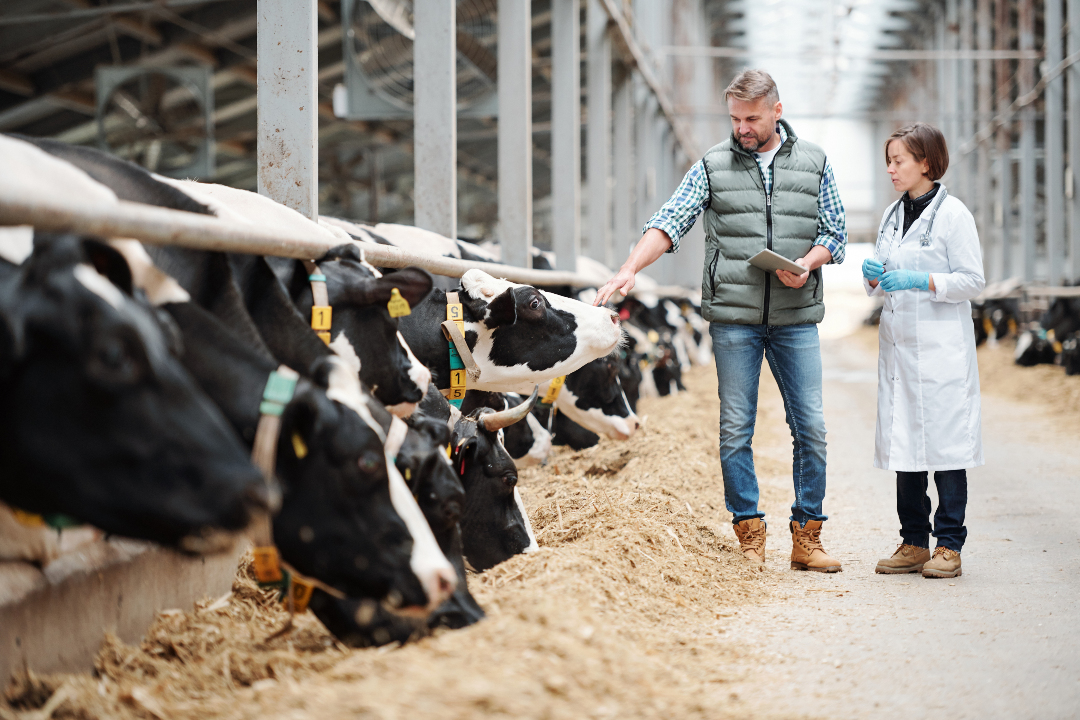
Survey of Highly pathogenic avian influenza A(H5) Shows Incidence of humans exposed to infected dairy cattle Increasing
On Feb. 13, 2025, public health officials from the U.S. Centers for Disease Control and Prevention (CDC) reported results from a serosurvey conducted among 150 bovine veterinary practitioners. Three practitioners had evidence of recent infection with HPAI A(H5) virus, including two without exposures to animals with known or suspected HPAI A(H5) virus infections and one who did not practice in a U.S. state with known HPAI A(H5) virus–infected cattle.
At the time of this serosurvey, HPAI A(H5) in dairy cattle had been detected in 14 U.S. states, with four human cases in persons with dairy cattle exposure in three states. This serosurvey was reviewed and approved by the Ohio Department of Health institutional review board and was conducted consistent with applicable federal law and CDC policy.
Participants reported their primary practice in 46 U.S. states (143) and Canada (seven). Among all survey participants, 82 (55%) practiced in states with HPAI A(H5) virus–positive dairy herds, and 25 (17%) worked with dairy cattle with known or suspected HPAI A(H5) infection.
All 150 surveyed practitioners were serologically tested for antibodies to recent HPAI A(H5) virus infection. Three (2%) survey participants had antibodies to HPAI A(H5) suggestive of recent HPAI A(H5) infection; all were U.S.-based practitioners. None of the practitioners with positive serology results reported respiratory or influenza-like symptoms, including conjunctivitis nor had any received testing for influenza since January 2024.
Among 150 bovine veterinary practitioners, three had evidence of recent infection with HPAI A(H5) virus, including one who only practiced in two states (Georgia and South Carolina) with no known HPAI A(H5) virus infection in cattle and no reported human cases. This practitioner reported no exposures to animals with known or suspected HPAI A(H5) virus infections.
These findings suggest that there might be HPAI A(H5) virus–infected dairy cattle in states where infection in dairy cattle has not yet been identified, highlighting the importance of rapid identification of infected dairy cattle through herd and bulk milk testing as recently announced by the U.S. Department of Agriculture.
CDC recommended offering the influenza antiviral oseltamivir as postexposure prophylaxis or treatment and HPAI A(H5) molecular testing to asymptomatic workers with high exposure to infected animals. No seropositive practitioner knew that they were working with dairy cattle with known or suspected HPAI A(H5) infection. None of the seropositive practitioners reported wearing respiratory or eye protection while providing veterinary care to cattle. Safety goggles and a respirator are recommended when working with uninfected animals in regions where there are confirmed or potentially infected animals.
Note: Since the serosurvey was conducted, the HPAI A(H5) outbreak has expanded to include 67 confirmed human cases, including 40 with dairy cattle exposure compared with the initial three cases of exposure.
Tags:
Source: U.S. Centers for Disease Control and Prevention
Credit:
